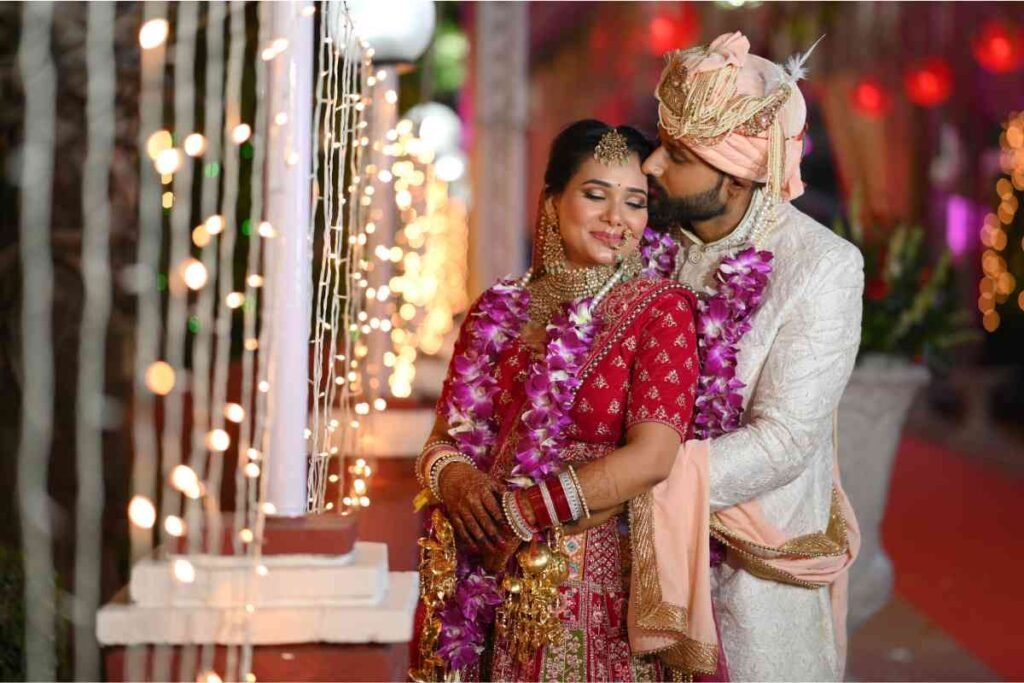Forget the stock market fluctuations, the quarterly corporate earnings, or the latest government stimulus package. If you want to witness India’s most powerful, consistent, and decentralised economic engine in action, just wait for the arrival of a glittering, heavily embroidered envelope.
Yes, the Indian wedding invitation. It’s not just a social summons; it’s a starter pistol for a localized economic boom that, on a national scale, constitutes a colossal industry estimated to be worth over ₹3 lakh crore (and that’s likely a conservative figure).
We celebrate our weddings with gusto, colour, and a guest list that could rival a small city’s population. But behind the emotional ceremonies and lavish feasts lies a staggering economic ecosystem.
The “Big Fat Indian Wedding” isn’t just a cultural phenomenon; it’s a de facto economic sector, a superpower that supports millions of livelihoods, from the high-end diamond merchant to the humble local florist. This isn’t just two people getting married; it’s two families providing a massive, grassroots stimulus package.
The Wedding Ecosystem: A Breakdown of the Billions
Let’s dissect this beautiful beast. A single wedding unleashes a torrent of spending that flows into dozens of interconnected industries.

- The Gold Standard (Jewellery): This is the heavyweight champion of wedding expenses. Gold, diamonds, polki, kundan – the demand is insatiable. It’s not just the bride’s jewellery; it’s gifts for the family, investment pieces, and more. This single cultural practice keeps thousands of jewellers, from grand showrooms to skilled local sunars (goldsmiths), in business. A wedding is often the single largest purchase of precious metals a family will ever make.
- The Textile Titans (Apparel & Fashion): The wedding wardrobe is a spectacle. Bridal lehengas that weigh more than the bride, magnificent Kanjivaram sarees, dapper sherwanis, and of course, new outfits for parents, siblings, cousins, and that one distant aunt who will judge everyone’s clothes. This demand fuels a massive industry encompassing high-fashion designers, local boutiques, textile mills, weavers, embroiderers, and the friendly neighbourhood tailor working overtime.
- The Feast Federation (Catering & Food): An Indian wedding without an extravagant food spread is practically a constitutional crisis. We’re talking multi-cuisine buffets that look like a culinary UN General Assembly, live chaat counters, and dessert sections that could cause a city-wide sugar rush. This single component supports a vast network: caterers, chefs, waiters, grocery suppliers, farmers, dairy producers, and sweet shops. The sheer volume of food procured is mind-boggling.
- The Venue & Decor Czars: From opulent five-star hotels and sprawling farmhouses to local community halls, the venue is a huge ticket item. Then come the decoration – the florists who create magical mandaps, the lighting technicians who turn any space into a fairy tale, the set designers who build elaborate themes. A wedding can keep a whole team of skilled and unskilled labour employed for days.
- The Service Sector Army (The Human Capital): This is where you see the true depth of employment. A wedding is a logistical Olympics, and it needs an army:
- Wedding Planners: The field marshals coordinating the entire operation.
- Photographers & Videographers: To document every single moment, because if it wasn’t captured from three different angles, did it even happen?
- Makeup Artists & Hairstylists: Ensuring everyone looks their absolute best.
- Mehndi Artists: For intricate, traditional body art.
- DJs, Live Bands, Dhol Players: To provide the non-stop soundtrack.
- Priests (Panditjis): To officiate the sacred ceremonies.
- The Tourism & Logistics Engine: The rise of “destination weddings” has turned the industry into a major tourism driver. This involves booking hundreds of hotel rooms, airline tickets, buses, and luxury cars. Even non-destination weddings often involve significant travel for guests, boosting local hospitality and transport sectors.
The Ripple Effect: One Wedding, A Hundred Incomes
This is not a top-down economy. It’s a beautifully chaotic, grassroots system. The money a family spends on a wedding doesn’t vanish into a corporate black hole. It ripples through the community. The payment to the caterer pays the salaries of his staff, who in turn buy groceries from the local vendor.
The money given to the florist supports the flower farmer. The shagun ka lifafa (gift envelope) from one guest often circulates to fund another upcoming wedding, acting as an informal, peer-to-peer credit system.
This economic impact is felt at every level. While Ambani-level weddings make headlines, even a modest, middle-class wedding will engage the local sweet shop, the neighbourhood tent house, the freelance photographer, and the community priest. It’s a self-sustaining economic model deeply integrated into our social fabric.

A Cultural Superpower
The Indian wedding is the ultimate expression of hospitality, community, and social standing. It’s an event where families showcase their love and legacy. But viewed through an economic lens, it is undeniably one of the most powerful drivers of the Indian domestic economy. It’s a tradition that, while deeply personal and sacred, also happens to be a formidable economic force, ensuring that the act of two people tying the knot helps secure the livelihoods of millions. Now that’s what you call a truly auspicious union.
What part of the wedding economy fascinates you the most? Have you seen its direct impact in your community? Share your insights in the comments below! And if you found this economic breakdown of the Big Fat Indian Wedding eye-opening, please share it on WhatsApp, Facebook, and Twitter!